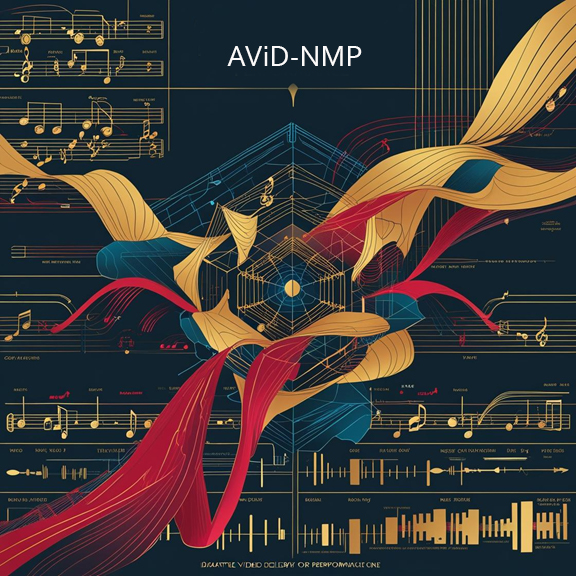Welcome
This is the home page of the Adaptive Video Delivery for Network Music Performance for Network Music Performance (AViD-NMP) project.
The AViD-NMP project is funded by the 6G-XR project.
The project is carried out by the Mobile Multimedia Laboratory (MMLab), one of the oldest research labs in Greece covering computing, communications and media. The MMLab is part of the Department of Informatics at the Athens University of Economics and Business (AUEB) in Greece. research projects are undertaken under the auspices of the AUEB Research Center (AUEB-RC).
About
The Adaptive Video Delivery for Network Music Performance for Network Music Performance (AViD-NMP) project will use the 6G-XR infrastructure to promote research on Network Music Performance (NMP) over 5G/6G networks, exploiting the 5G RAN and MEC resources provided by the 6G-XR testbeds to exchange audio, video and volumetric data between the participants in XR-enabled NMP sessions. NMP can be a great showcase for both 5G/6G and XR: its ultra-low latency and ultra-high bandwidth throughput requirements can only be supported by 5G/6G networks and, while the immersive telepresence required during NMP sessions can be revolutionized by XR, the processing needs of XR can only be supported with acceptable latencies by placing such functions inside a 5G/6G MEC infrastructure. Finally, multiparty NMP sessions require either SFU or MCU functionality to bridge the participants and allow adapting the media streams to the prevailing conditions, but to ensure acceptable latency, these services must also be located in a 5G/6G MEC infrastructure, close to the endpoints. The AViD-NMP project will exploit the 5G RAN, to gain ultra-low communication latency at Gbps transfer rates, and the MEC resources, to pursue volumetric video processing and/or SFU or MCU bridging close to the end users. The focus of the project will be on training and education, namely, assessing the QoS and QoE of NMP sessions over the advanced testbeds of 6G-XR, as well as assessing the feasibility of XR-enabled NMP over the advanced networking and processing functions offered by the 6G-XR sites. The AViD-NMP project will deploy a fully-fledged multiparty audio/video/volumetric NMP setup that will serve as a popular demonstrator of the advances made by the 6G-XR project, highlighting the benefits of 5G/6G and XR technologies to society.
Experiments
The following scenarios will be evaluated:
-
P2P with Native Rendering.
- Sender encodes XR stream.
- Stream is sent to each receiver independently.
- Receiver(s) decode each stream locally.
-
Advantages:
- Lowest possible latency
- No need for MEC services
-
Disadvantages:
- Sender needs to send multiple streams
- Sender needs considerable processing power
-
Performance gains of edge-computing.
- Sender encodes XR stream.
- Stream is sent to SFU in MEC.
- SFU relays the stream to each participant.
- Receiver(s) decode each stream locally.
-
Advantages:
- Sender only needs to send a single stream
-
Disadvantages:
- Additional latency to go through MEC
- Sender needs considerable processing power
-
SFU with Remote Rendering.
- Sender does NOT encode the XR stream.
- Stream is sent to SFU in MEC.
- SFU encodes and relays the stream to each participant.
- Receiver(s) decode each stream locally.
-
Advantages:
- Sender only needs to send a single stream
- Sender does not need processing power
- SFU can adapt encoding depending on conditions
-
Disadvantages:
- Additional latency to go through MEC
Objectives
- OBJ1: Compare the bandwidth, latency and processing requirements in the different experiment setups.
- OBJ2: Compare the QoE in the different experiment setups
- OBJ3: Assess the feasibility of XR-enabled remote music teaching
- OBJ4: Publish the results
- OBJ5: Release the developed code
News
- 30 October 2025 Paper Network Music Performance in 5G Networks presented at International Symposium of the Internet of Sounds 2025
- 28 October 2025 Participation to 6G-XR impact day
- 6-8 October 2025 Visit to 5TONIC for experiments
- 4 September 2025 Paper Ultra-low Latency Point Cloud Streaming in 5G presented at EuroXR 2025
- 23 April 2025 Project Started

